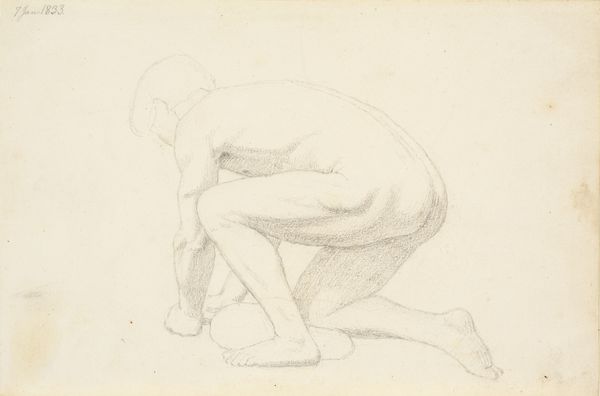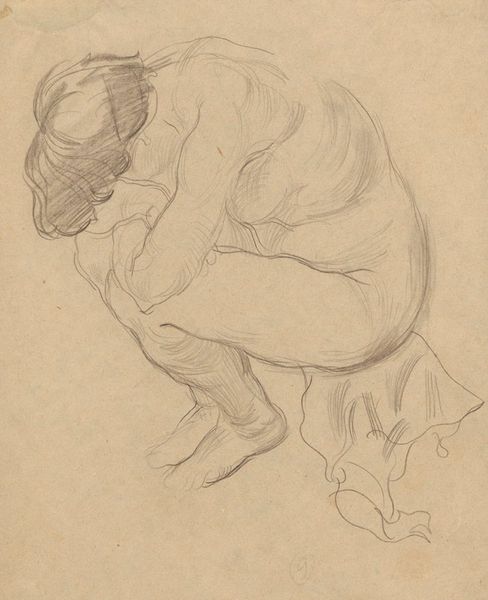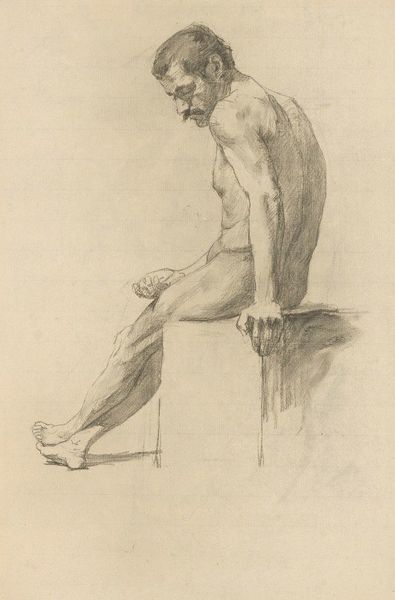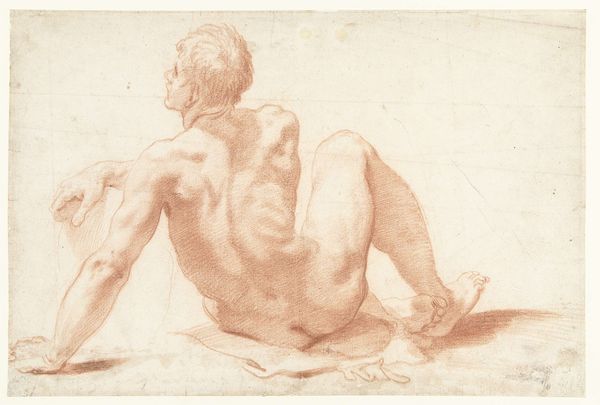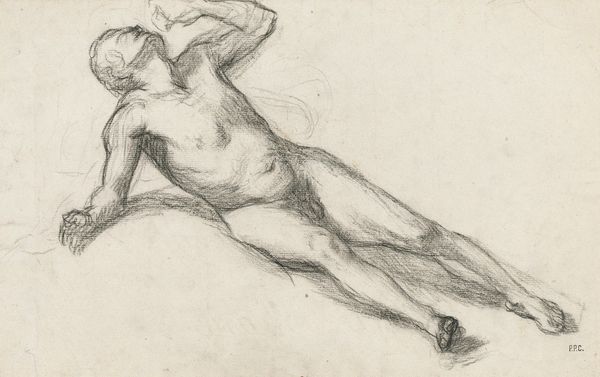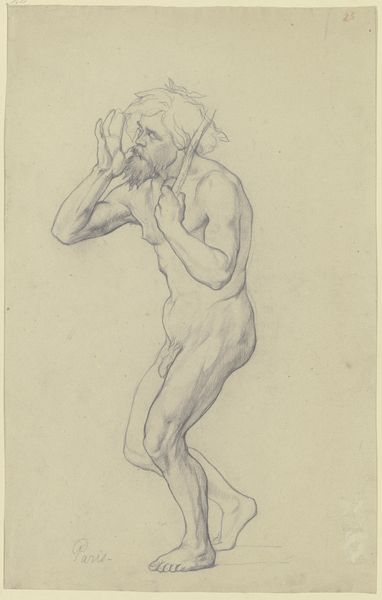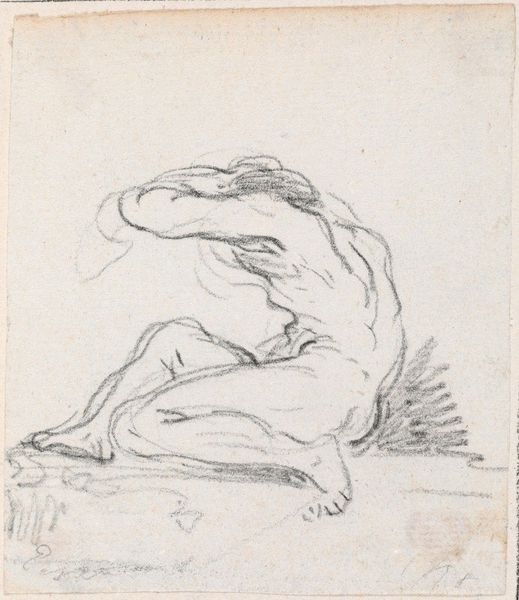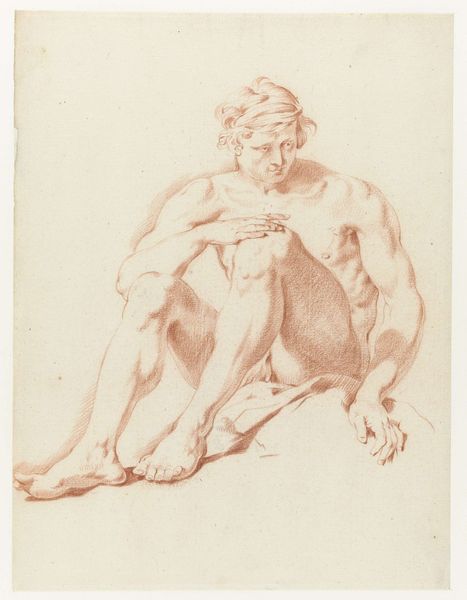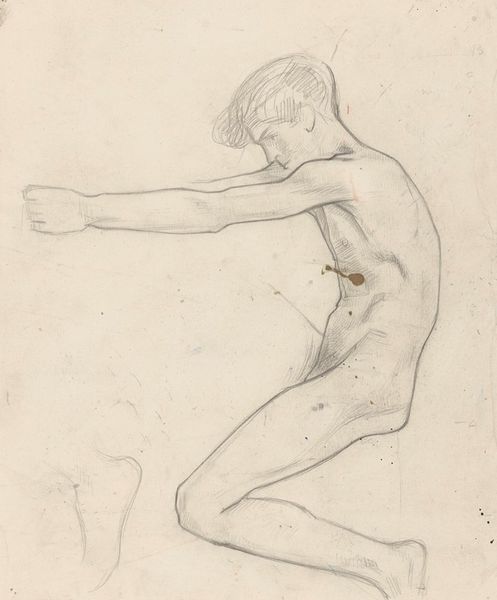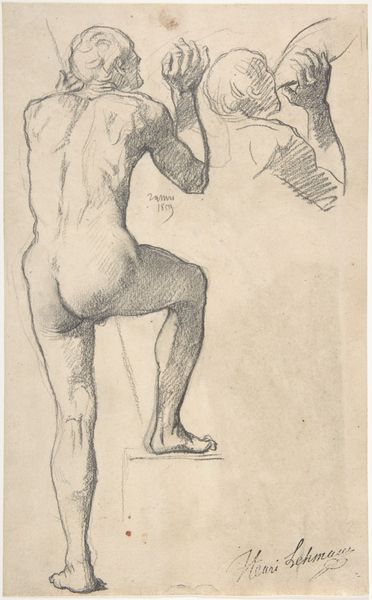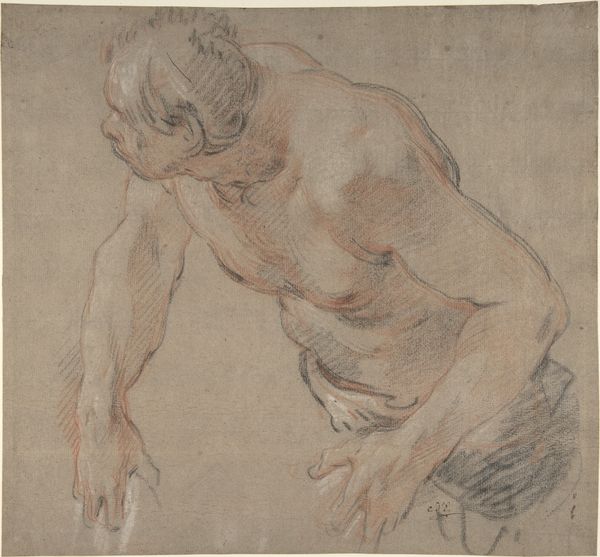
drawing, pencil
#
drawing
#
figuration
#
pencil
#
academic-art
#
nude
#
realism
Copyright: Public Domain: Artvee
Editor: We are looking at Henri Lehmann’s 1859 pencil drawing, "Kneeling Nude Male Figure, Facing Left." It feels… academic, almost like a study for something bigger. The pose is interesting. What's your take on this image, looking at it from a historical perspective? Curator: I see it as deeply embedded in the 19th-century academic tradition. Think of the École des Beaux-Arts, the French academy, shaping artistic taste. Lehmann was part of this system, absorbing its emphasis on anatomical precision, classical forms. Drawings like this were foundational, proving one’s mastery of the human form before tackling larger history paintings or public commissions. What’s missing here, deliberately so, is a narrative context. Editor: So, the nude isn't necessarily sensual or allegorical; it's more about demonstrating skill? Curator: Exactly. It’s a demonstration of artistic ability valued within the rigid structure of the academy. It also reminds us that “nude” does not equal “naked.” This drawing is about idealized, aesthetic form. Look closely at the pose, though. Does it suggest humility, strength, or perhaps even suppressed rebellion within the constraints of academic training? Editor: Rebellion? I hadn't thought of that. Curator: Think of Courbet's "Stonebreakers," painted around the same time – a gritty, anti-heroic portrayal of labor that challenged academic norms. Lehmann, despite his classical training, lived during a time of immense social and political change. While this drawing presents as conventional, what if that's just a surface? Editor: It is fascinating how understanding the socio-political climate transforms a simple study into something more complex. I’ll definitely look at academic art differently now! Curator: Precisely! The politics of imagery are subtle but pervasive. By understanding the institutions and ideologies that shaped artistic production, we can truly decode what these images communicated, and perhaps still communicate today.
Comments
No comments
Be the first to comment and join the conversation on the ultimate creative platform.
